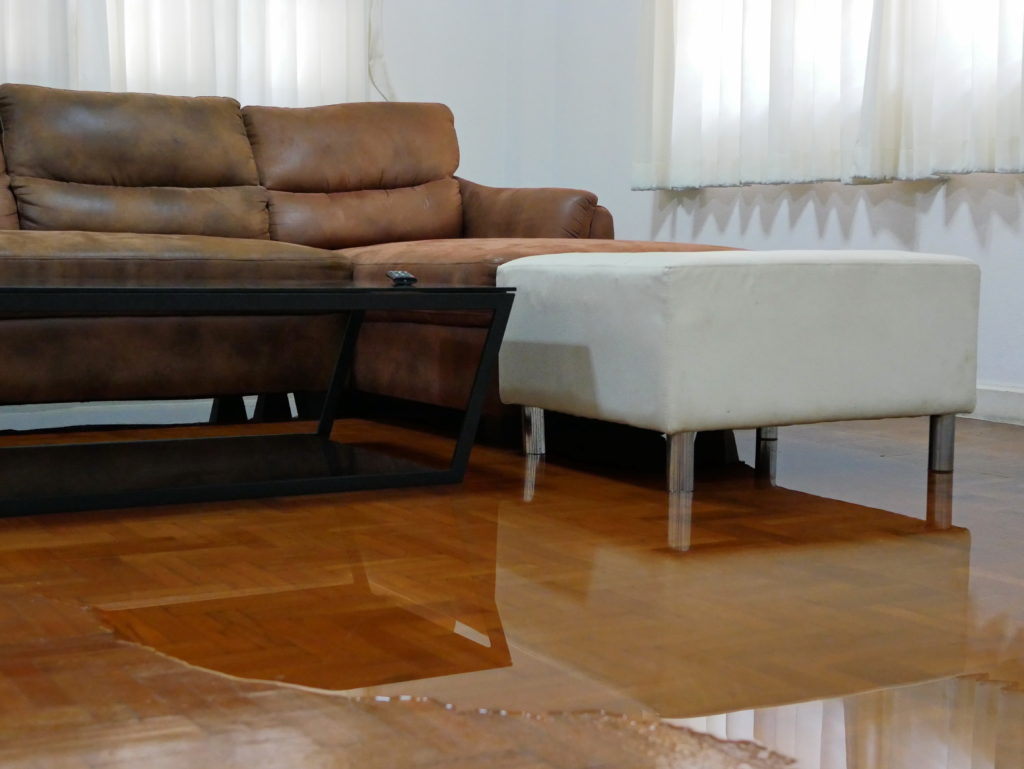Natural disasters like hurricanes and storms can occur anytime, pushing flood water into homes. If your home has wooden flooring, the water can cause significant damage to the floor. The planks can be affected, particularly if the water remains stagnant for a long time.
If your wooden floor absorbs too much water, warping can occur. This form of damage distorts the wood, creating an uneven surface. Warping can also cause buckling on wooden floors where ripples form around the edge of the wood planks.
Flood waters also create a conducive environment for mould to start growing within and beneath the wood planks. The glue used to attach the wooden floor to the subfloor can loosen up when it comes into contact with water. This causes sections of the floor to break and lift.
Although flood water can cause widespread damage to wooden floors, you can work with a water damage specialist can go a long way towards minimizing adverse effects. If you live in a flood-prone area and have a house with wood flooring, here’s what you can do to reduce damage to wooden floors after a flood:
Remove All Items From The Floor
The first step towards reducing damage to your wooden floor after a flood is to clear the surface of all soaked items. Moving the items to a dry space gives you room to work. There’s also less material that holds water, making it easier to work without leaking water back to the floor.
Drain Excess Surface Water
To minimize damage to your timber floor after a flood, you need to extract excess water from the floor surface as soon as possible. An effective way to remove flood water is to suck it up with a vacuum. As the water levels reduce, get a squeegee and use it to gather water from different parts of the room before sucking it up with the vacuum. This enables you to remove all the water on your wooden floor surface.
Scrub Your Floor
Flood water carries a lot of dirt into your home. Some of this dirt remains on wooden floors after extracting excess surface water. To remove the dirt, and other contaminants that may be left on the floor, use a mixture of water and cleaner to scrub the floor.
Consider disinfecting the floor during cleaning to keep mould from developing and preserve the floor. Look out for mouldy spots and treat them well with disinfectant. Remember to use a mild disinfectant that won’t stain the finish on your wooden floor.

Dry The Wooden Floor
Your wooden floor can be severely damaged when exposed to water for an extended period. You can keep this from happening by drying the floor well immediately after cleaning it up.
To ensure your floor dries well, get a technician to access the floor and the installation method before turning on fans or dehumidifiers. An experienced technician could force airflow below the surface to remove moisture using proper dehumidification and other surface and sub-surface drying methods.
Effective drying of wooden floors can take a prolonged period. Be ready to wait for seven to ten days for the wood to release sufficient water and warrant halting of forced drying. Essentially, the drying process should be allowed to continue until moisture levels in the wood reach 4% of the floor’s dry standard. After achieving this, the removal of the remaining water will occur slowly and naturally over the next three to six months.
Restore The Finish
After drying your wooden floor, you’d likely notice some damage on the floor finish. Suppose your wooden floor had finishes like polyurethane and wax. In that case, the technician may have removed them during drying to facilitate moisture removal as these kinds of finishes inhibits evaporation, trapping moisture underneath the surface.
As part of the drying process, the floor may cup slightly, causing the finish to crack due to movement. You can restore the ordinary appearance of your floor by applying fresh coats of finish on the floor after drying it thoroughly. When fixing your finish, work with a wood floor professional who understands the different types of wood and has specialized equipment for repairing water damage.
Final Thoughts
Most homeowners prefer wooden floors because of the aesthetics they add to their homes. However, this flooring is prone to damage if the home floods. The good thing is that there are several things you can do to minimize the damage to your wooden floor after a flood. If your home floods expectantly, taking the five steps discussed above can protect your floor and keep significant damages at bay.






